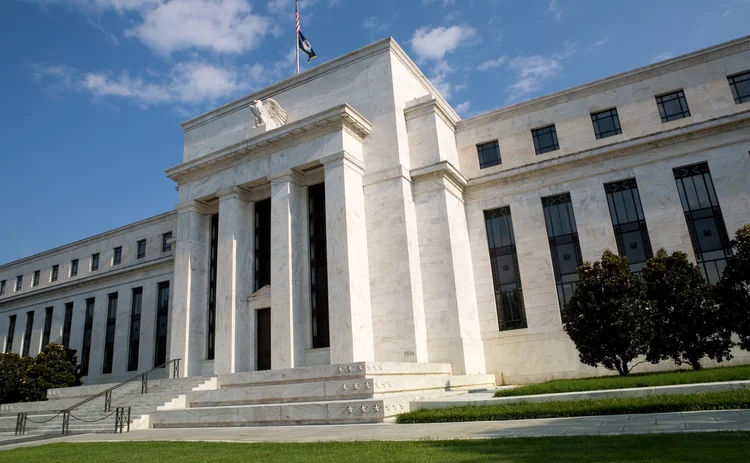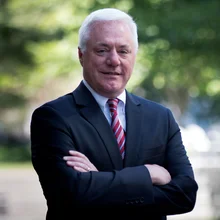
Payments and market infrastructure development: Federal Reserve Systems’ FedNow
The world’s first cloud-native, instant payments RTGS was delivered on schedule and looks set to transform US payments

The highly complex payments system of the world’s largest economy was transformed in July 2023, when the US Federal Reserve System went live with its FedNow service.
The new, cloud-based real-time gross settlement system will allow some 9,000 banks and payment services providers in the US to facilitate instant payments across the country, based on Fed technology that was developed in-house.
The US has been comparatively slow to adopt instant payments, in part due to its complex and fragmented financial system, says Nick Stanescu, executive vice-president at the Federal Reserve Bank of Boston and chief executive of FedNow.

But FedNow benefits from some ‘second mover’ advantages. “We are the first cloud-native instant payments, real-time gross settlement system in the world,” says Ken Montgomery, first vice-president and chief operating officer at the Federal Reserve Bank of Boston.
Cloud technology offers the Fed the ability to improve resiliency, scale its footprint, deliver new features for evolving use cases and support 24/7 services, Fed officials say.
Importantly, the system is designed to never lose a transaction.
“We’re running a distributed system across the United States. Each instance can back one another, so even if our service provider had a failure in the East Coast, we could recover using resources on the West Coast. We have complete redundancy within all the regions, both locally and nationally,” says Montgomery.
“As ledgers are being updated, as we’re going through different components of logging the transaction, nothing completes until the previous set is completed,” Montgomery adds.
Stanescu stresses that major and minor technology innovations were required to maintain this lossless state across both coasts.
FedNow also settles directly against the master accounts of the Federal Reserve. “It doesn’t require pre-funding. It processes and settles transactions on a real-time gross basis, so payments are settled one-to-one, with finality,” Stanescu adds.
Digital onboarding
The US still has thousands of financial institutions, many of them small, that could potentially all link to FedNow – the Fed’s first new payments system in 50 years. To make the sign-up process more streamlined, the Fed has largely automated the process, minimising human involvement.

“We’ve designed and built in-house a completely digitised onboarding process,” says Montgomery. The current record for the fastest financial institution to go live on FedNow is eight days from contract signing, he adds. So far, close to 500 institutions have joined.
The digital onboarding experience, data and infrastructure is also expected to complement the Fed’s payments initiatives moving forward, says Mark Gould, the Federal Reserve’s chief payments executive. “It’s going to pay dividends as we take that to our other payment services,” he says. “I’ve described a lot of what we’ve done with FedNow as establishing a beachhead for our other payment services. Whether it’s the cloud infrastructure or digitised onboarding process, we are gaining experience with modern technologies that will trickle down to our other services.”
The Fed established its new instant payments system on time. But accelerated the schedule to mid-2023 and launched on schedule. “Setting and broadly communicating a launch date, and then successfully making the date, sets the FedNow programme apart from many others, whether in central banking or any other type of business,” says Gould.

Stanescu stresses the importance of the Fed giving high levels of access to banks and other financial intuitions that would use FedNow early in the development phase. The system’s pilot programme was driven by user-generated data and feedback.
“When we only had about 60% of the code – I would say it was even pre-alpha – we allowed pilot banks to connect into it and start working through it to make sure we got early and real time feedback as we were building,” Stanescu says. “This level of showing ‘how the sausage is made’ is quite unique for a central bank, because normally everything has to be absolutely perfect and buttoned up and completely done prior to being exposed to the banks.”
In-house development
FedNow wasn’t intended to be an in-house product. ‘Plan A’, says Montgomery, was to find a third-party vendor solution and tailor it to the needs of the Fed. But Montgomery says the Fed could not find a vendor that could deliver within the timeframe while also being flexible with its ‘technology roadmaps’ – the future development of the technology.
While management was still seeking vendors, it also deployed a team from within the Fed to work on an in-house solution. “We treated our ‘plan B’ team just like they were a start-up,” says Montgomery. Sometime in early 2020, Montgomery adds, plan B became the plan.
Concurrently searching for a vendor and building a solution allowed the Fed “to make a decision based on what our team had accomplished, as opposed to what we thought we might be capable of”, Gould adds.
It also reduced the cyber risks associated with many central banks using the same vendor for payments. “Concentration risk is something that certainly came in as a factor in deciding how to source the technology,” Montgomery says. “Now there’s one vendor who has a pretty good share of this business, and that’s something we were watching -– among other considerations -– and then we opted to go our plan B, build in-house route.”
Fed officials believe the in-house solution sets FedNow up for a dynamic and evolving future.
“One of the things that will position us going forward is that we’re not dependent on a vendor to provide their product roadmap. We can define our own and be responsive to emerging industry needs,” says Montgomery. “We have a release schedule and we’ll be delivering changes and updates on a regular basis. So, the product will continue to evolve. We wouldn’t have necessarily achieved that if we went with a vendor.”
The Central Banking Awards 2024 were written by Christopher Jeffery, Daniel Hinge, Dan Hardie, Joasia Popowicz, Ben Margulies, Riley Steward, Jimmy Choi and Blake Evans-Pritchard.
Only users who have a paid subscription or are part of a corporate subscription are able to print or copy content.
To access these options, along with all other subscription benefits, please contact info@centralbanking.com or view our subscription options here: http://subscriptions.centralbanking.com/subscribe
You are currently unable to print this content. Please contact info@centralbanking.com to find out more.
You are currently unable to copy this content. Please contact info@centralbanking.com to find out more.
Copyright Infopro Digital Limited. All rights reserved.
As outlined in our terms and conditions, https://www.infopro-digital.com/terms-and-conditions/subscriptions/ (point 2.4), printing is limited to a single copy.
If you would like to purchase additional rights please email info@centralbanking.com
Copyright Infopro Digital Limited. All rights reserved.
You may share this content using our article tools. As outlined in our terms and conditions, https://www.infopro-digital.com/terms-and-conditions/subscriptions/ (clause 2.4), an Authorised User may only make one copy of the materials for their own personal use. You must also comply with the restrictions in clause 2.5.
If you would like to purchase additional rights please email info@centralbanking.com






